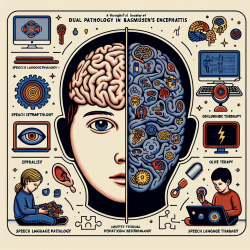As practitioners dedicated to improving the lives of children with cerebral palsy (CP), we must continuously seek evidence-based strategies to enhance our interventions. A recent study titled Associated Impairments among Children with Cerebral Palsy in Rural Bangladesh—Findings from the Bangladesh Cerebral Palsy Register provides valuable insights into the associated impairments among children with CP and highlights the importance of comprehensive, data-driven approaches to therapy.
The study analyzed data from the Bangladesh Cerebral Palsy Register (BCPR), which includes 3,820 children with confirmed CP. The findings revealed a high prevalence of associated impairments, with 81% of children having at least one additional impairment. Specifically, 74% had speech impairments, 40% had intellectual impairments, 33% had epilepsy, 18% had hearing impairments, and 14% had visual impairments. Notably, most of these children had never received rehabilitation services and were not enrolled in any educational system.
For practitioners, these findings underscore the necessity of a multidisciplinary approach to therapy that addresses not only motor deficits but also the associated impairments that can significantly impact a child's quality of life. Here are several actionable steps practitioners can take based on the study's outcomes:
- Comprehensive Assessment: Implement thorough assessments that include evaluations for speech, hearing, intellectual, and visual impairments. Early identification of these associated impairments can guide more targeted and effective interventions.
- Multidisciplinary Teams: Assemble multidisciplinary teams that include speech-language pathologists, occupational therapists, physiotherapists, and special educators. Collaborative efforts can address the multifaceted needs of children with CP more effectively.
- Early Intervention: Prioritize early intervention services to mitigate the impact of associated impairments. Early therapeutic interventions have been shown to improve functional outcomes and quality of life for children with CP.
- Parental Involvement: Engage parents and caregivers in the therapeutic process. Educating them about the importance of early intervention and providing them with strategies to support their child's development at home can enhance the effectiveness of therapy.
- Advocacy for Services: Advocate for increased access to rehabilitation and educational services for children with CP. This may involve working with local governments, NGOs, and other stakeholders to develop and implement policies that support the needs of these children.
Additionally, the study identified several predictors of associated impairments, including the severity of motor impairment (GMFCS levels III-V) and post-neonatally acquired CP. These predictors can help practitioners identify children who are at higher risk and may benefit from more intensive interventions.
As practitioners, it is also crucial to stay informed about the latest research and best practices in the field. Continued professional development and engagement with the academic community can help ensure that our interventions are grounded in the most current evidence.
In conclusion, the findings from the Bangladesh Cerebral Palsy Register highlight the critical need for comprehensive, multidisciplinary approaches to therapy for children with CP. By implementing data-driven strategies and advocating for increased access to services, we can help improve the functional outcomes and quality of life for these children.
To read the original research paper, please follow this link: Associated Impairments among Children with Cerebral Palsy in Rural Bangladesh—Findings from the Bangladesh Cerebral Palsy Register.










